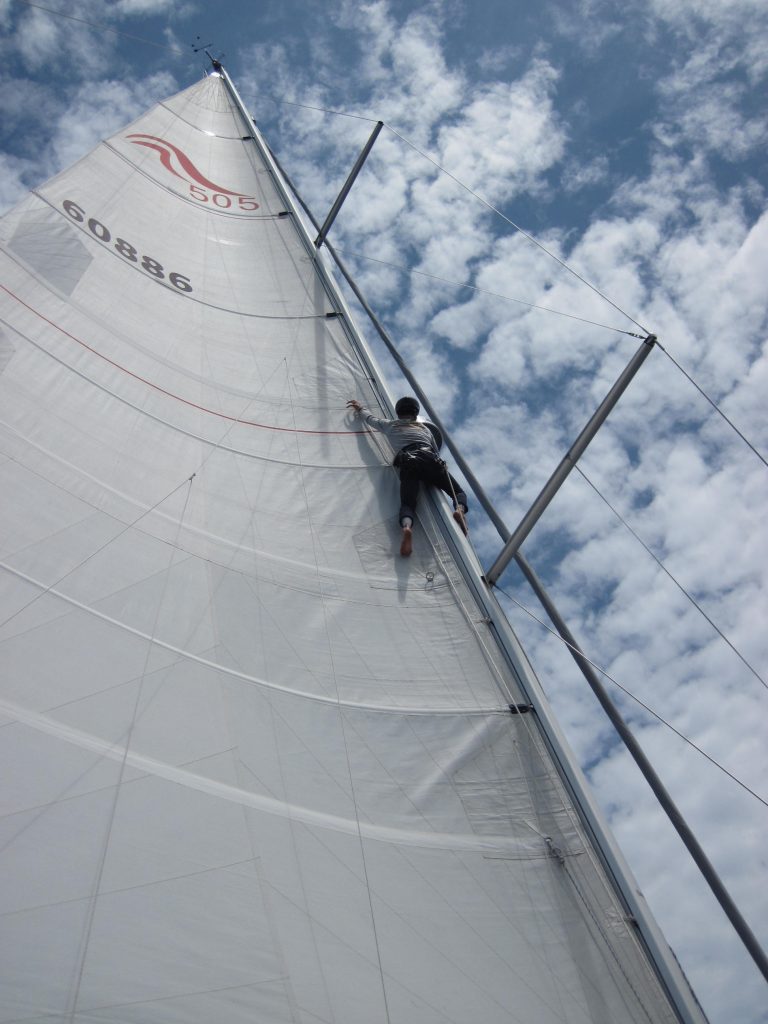It was 11:00 PM, and while Lia Ditton slept on “her side” of the catamaran, I had the watch. Suddenly, the quiet was shattered by the clanging of rod rigging banging on the deck. I immediately ran out to the foredeck, and somehow Lia was only a couple of steps behind me. The port diamond stay had broken at the spreader, and the mast was wobbling around like a partially cooked noodle. It wasn’t a good look!
Rigging problems – even on the best maintained yachts – can occur in a flash. A screw is sheared that holds a backing plate for a runner tang. Under-resinated carbon laminations shear apart. Turnbuckles on diagonals back off while on days-long beats. Cap shrouds or diamonds suddenly break. All of these things and more can cause a sudden rig failure, but if the watch is alert or a helmsman is quick witted, you may be able to avoid the worst and keep the rig standing. Awareness of the situation and fast reactions are essential.
The first thing to do is take the load off the rig. If a starboard spreader folds up, the reaction may be as simple as the helmsman taking to a port tack, immediately followed by taking headsail and main down. A masthead halyard can be clipped to a starboard padeye or attached to the chain plates. Recognize the problem. Stop the problem from getting worse. Fix the problem – or at least make sure things are as secure as possible. Regular rig inspections will help to avoid some of the problems before they occur. If you’re on a particularly long leg of a transoceanic passage, make sure turnbuckles and fittings are in good shape before tacking.
Lia and I managed to get the sails down and secure the upper part of the diamond shroud that night, immediately after the shroud broke. With seas flattening out a couple of days later, we were able to effect a jury rig by running a long Spectra line from the base of the mast, past the outboard end of the spreader, around a sail tie at the top of the mast, back down past the spreader again and back to the base of the mast. The Spectra line was then tensioned, first with a block and tackle and finally with the help of a winch. That rig managed to hold up for 5 or 6 days and got us across the Gulf Stream and into West Palm Beach, FL where we were able to replace the shroud.
Years ago, I was told that people who cruise or race long distances learn to fix things, or they learn to do without them. Some people have been known erect spinnaker poles or utilize mast stumps for a jury-rigged mast. It’s far better to stop the problem before the rig goes down. One way or another it can be fixed, modified or jury-rigged, but one way or another, you should have a plan. What would you do?















